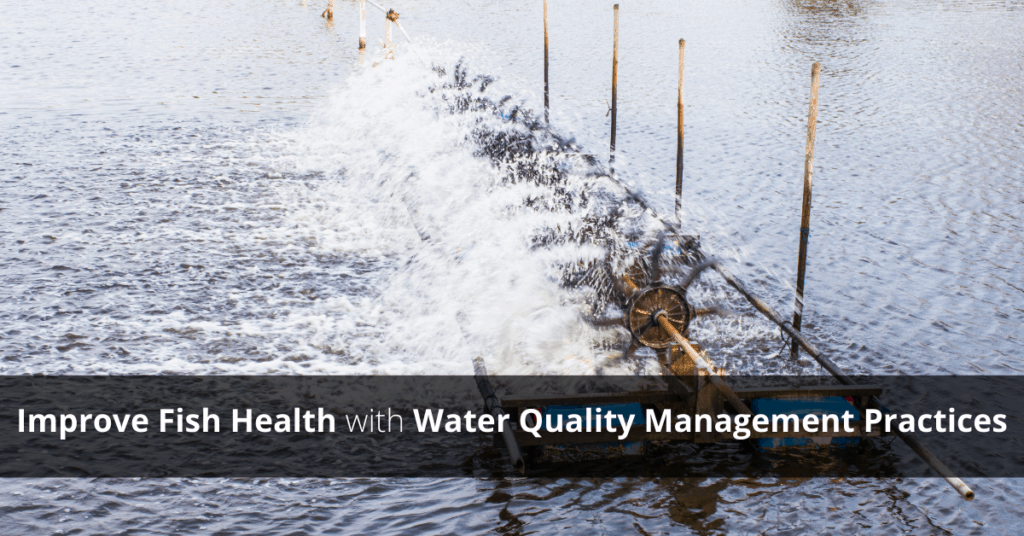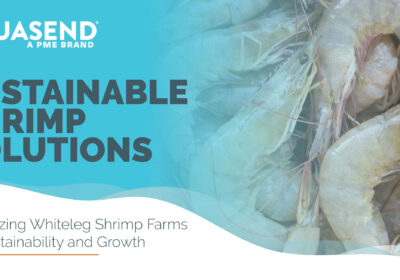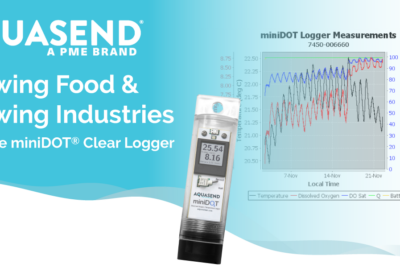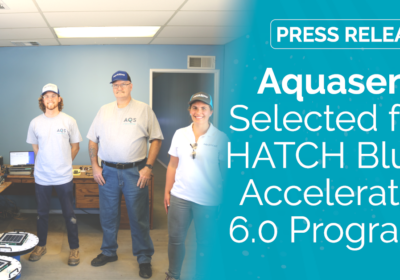Improve Fish Health with Water Quality Management Practices

As the aquaculture industry in the U.S. grows to accommodate the increased demand for seafood, it is even more important for aqua farmers to create the best possible environment for the specific fish species being raised. Water quality management is the most important part of any aqua farm since it is affected by many variables and can drastically affect the fish crop produced by the farm.
Alkaline or Acidic?
Important water qualities to monitor are pH, dissolved oxygen (DO), temperature, salinity, turbidity, and alkalinity. Different species of fish will have different ideal levels for each category, so it’s important to understand the needs of the specific species of fish being raised.
Ideal pH levels for most fish species tend to be between 6-6.5 and 8-8.5 (at sunrise). If the pH of the water strays too far above or below those numbers, it can lead to fish deaths or illnesses. When the pH level is above 7 (neutral) the water is alkaline but if the pH level is below 7 it is acidic. One way to balance the pH level of a pond is by using alkaline fertilizer if the water is too acidic, or acidic fertilizer if the water is too alkaline. Ensuring that the soil in and around the pond has stable and ideal pH levels will help stabilize and maintain the pH levels in the water. pH measurements are typically taken at sunrise because that is when the pH levels are at their lowest point, since pond respiration overnight decreases pH.
Dissolved Oxygen and Water Quality
Dissolved oxygen (DO) levels are perhaps the most important variable to monitor. DO levels are controlled by the amount of oxygen dissolved into the pond from the air, but mostly by the amount of light available to phytoplankton for photosynthesis during the day. The more sunlight that the phytoplankton in the pond are exposed to, the higher the DO level will be. DO levels drop significantly at night when pond respiration is occurring (which adds more carbon dioxide into the water) but photosynthesis has stopped. DO levels also decrease as the water gets deeper, since less sunlight gets through and phytoplankton populations decrease.
Monitoring DO levels is easy with the use of a device such as the Aquasend Beacon™, or other monitoring device, and adjusted with aerators. Again, different species of fish will have different ideal DO levels and dropping too far below the ideal levels could be fatal for the fish. Proper farm management practices and consistent water quality measurements will increase fish health, reduce risk, and increase your bottom line.
Physical Factors that Affect Water Quality
The physical aspects of a pond that can affect fish health are temperature, turbidity, and waste management. Since fish are cold-blooded, they will adjust their body temperature to the temperature of the water they live in. Just like with DO and pH levels, different species have different ideal temperatures. A device like the Aquasend Beacon which monitors both DO and temperature levels can provide useful insights into how temperature changes affect DO levels.
Turbidity refers to how murky or cloudy the water appears. The greater the density of phytoplankton in a pond, the higher the turbidity. Phytoplankton are the base of the aquatic food chain as well as the main source of DO in ponds. Low turbidity means there is less food and DO for the fish which can lead to stunted growth, low reproduction rates, and possibly death. On the other hand, if the turbidity is too high, sunlight can’t penetrate the pond deeply enough which leads to phytoplankton deaths which in turn leads to less phytoplankton, less food for the fish, and lower DO levels.
Increase your bottom line and keep your fish healthy with advanced water quality management practices. Contact Aquasend today to order your Aquasend Beacon and give your farm a breath of fresh air.


